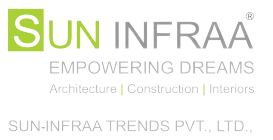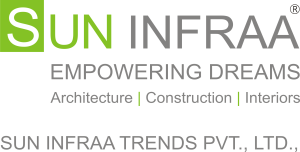How to Do a Design Plan For Commercial Building from Concept to Construction
Designing a commercial building is a complex yet rewarding process that involves creativity, technical expertise, and strategic planning. A well-thought-out design plan ensures the building serves its intended purpose, aligns with the client’s vision, and complies with all regulations. The journey from concept to construction is not just about erecting a structure; it’s about creating a space that enhances productivity, reflects the brand identity, and provides long-term value.
1. Define the Purpose and Requirements
The first step in designing a commercial building is understanding its purpose. Is it an office space, a retail store, a warehouse, or a mixed-use facility? The function of the building will significantly influence the design.
- Client Consultation: Engage with stakeholders to understand their vision, needs, and budget.
- Space Requirements: Identify the types and sizes of spaces required, such as conference rooms, workstations, or storage areas.
- Target Audience: Consider who will use the building—employees, customers, or tenants—and design accordingly.
2. Site Analysis and Feasibility Study
A thorough analysis of the site is crucial to ensure the project is viable and optimally designed for its location.
- Site Survey: Assess the topography, soil conditions, and access points.
- Zoning and Regulations: Review local building codes, zoning laws, and environmental regulations.
- Utilities: Evaluate the availability of water, electricity, and other essential services.
3. Conceptual Design
This is where creativity takes center stage, as architects and designers develop the initial vision for the building.
- Sketches and Layouts: Create rough sketches and preliminary layouts to visualize the structure.
- Aesthetic Choices: Decide on the architectural style, materials, and facade design.
- Sustainability Features: Incorporate eco-friendly elements like solar panels, green roofs, or energy-efficient systems.
4. Detailed Design Development
Once the concept is approved, the design is refined into detailed plans and blueprints.
- Floor Plans and Elevations: Develop precise floor plans, elevations, and sections to define the building’s dimensions and layout.
- Structural Engineering: Design the framework to ensure the building’s stability and durability.
- MEP Planning: Plan mechanical, electrical, and plumbing systems to support the building’s functionality.
5. Budgeting and Cost Estimation
Accurate cost estimation is critical to avoid financial surprises during construction.
- Material Costs: Determine the cost of chosen materials, fixtures, and finishes.
- Labor Expenses: Include costs for construction workers, engineers, and other professionals.
- Contingency Fund: Allocate extra funds for unexpected expenses or changes in scope.
6. Approval and Permits
Before construction begins, obtain all necessary approvals and permits from local authorities.
- Submission of Plans: Submit detailed drawings and documents for review.
- Inspections: Ensure the design meets safety and regulatory standards.
- Revisions: Address any feedback or required changes to gain approval.
7. Construction Planning and Management
With permits in place, it’s time to prepare for construction.
- Timeline Creation: Develop a construction schedule to manage timelines efficiently.
- Hiring Contractors: Select reliable contractors and suppliers for the project.
- Material Procurement: Source and order materials to avoid delays.
8. Construction Phase
This is where the design becomes a reality. Effective management ensures the project stays on track.
- Site Supervision: Monitor the construction to ensure adherence to the design and quality standards.
- Problem-Solving: Address on-site challenges or changes promptly.
- Progress Updates: Keep stakeholders informed with regular updates and reports.
9. Final Inspection and Handover
Once construction is complete, the building undergoes a thorough inspection before being handed over to the client.
- Quality Check: Inspect all aspects of the construction to ensure compliance with the design.
- Client Walkthrough: Guide the client through the building to demonstrate features and address queries.
Conclusion
Designing a commercial building is a journey that requires careful planning, collaboration, and attention to detail. Whether you’re an architect, a business owner, or a developer, understanding the design process empowers you to make informed decisions and bring your vision to life. Remember, a well-designed commercial building is not just a space—it’s a cornerstone of growth, innovation, and success.



